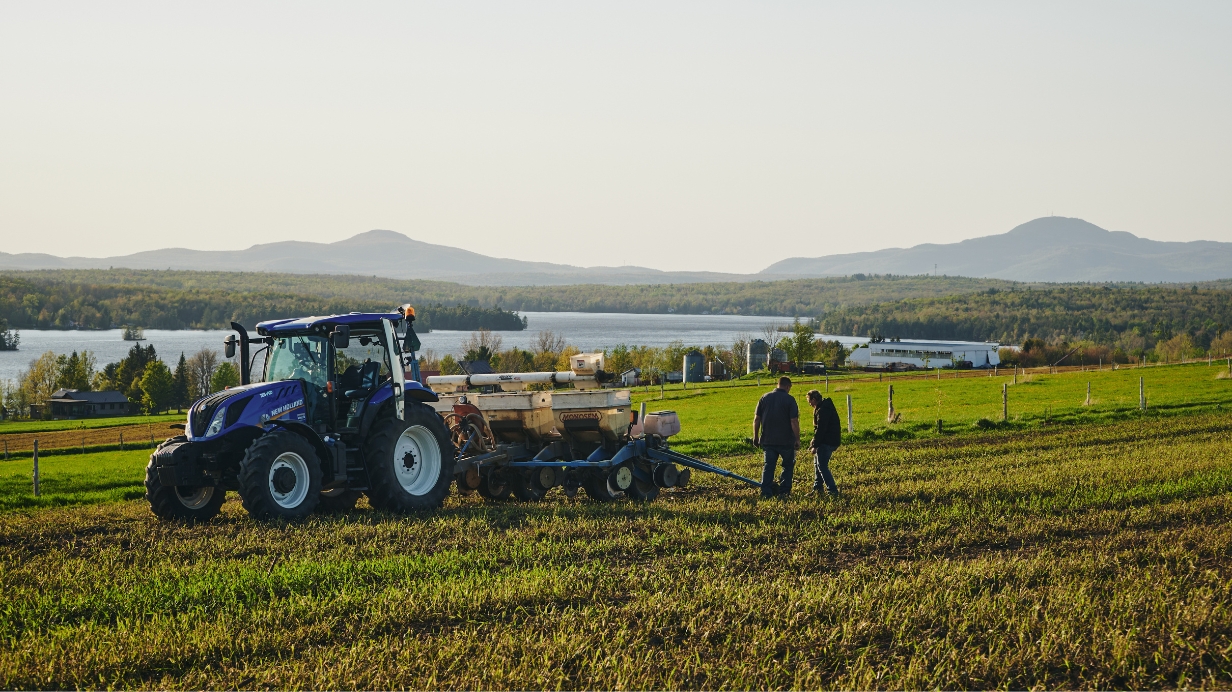Fertilizers: Stocked up and ready for planting season
At Sollio Agriculture, we’re constantly adapting our fertilizer supply strategies to reduce costs and meet the many challenges facing the industry. And that flexibility pays off! Our warehouses are stocked up and ready for planting season.
We all know that fertilizer is a major investment for any farm business. That’s why every farmer needs a reliable supplier who can provide quantity, quality, and on‑time delivery at a competitive price.
But in today’s political and economic climate, that isn’t always easy. Since the pandemic and Russia’s invasion of Ukraine, the fertilizer market has been highly volatile. Global supply has tightened and prices have gone up. And with the situation in the Middle East and the context of trade wars, the pressure is on to manage supply risks.
The key to success is planning. Spot purchases are a very high-risk strategy, one which rarely deliveries significant benefit. Purchase strategies for each year are heavily influenced by forecasted demand, so it is important that farmers work with their retailer to ensure their needs are in the plan. After all, securing next spring’s supply can start as early as the previous summer.
As such, we need to avoid one-off purchases and adopt a more structured, well‑planned approach to fertilizer procurement.
That’s why it is a best practice for agri-advisors to meet with farmers several times a year to understand their requirements and make sure they’ll be able to get the right products at the right time.
It’s how we are able to successfully navigate the many challenges facing our industry.
Challenges in the fertilizer supply industry
Sollio Agriculture is a significant supplier of fertilizer across Canada. Our purchase volumes create economies of scale, but we still face many challenges:
1.Production costs
Making nitrogen-based fertilizer requires a lot of natural gas—the raw material used in the manufacturing process. This means that volatility in energy costs have a direct impact on the price of nitrogen fertilizers.
2.Climate and geography
Whether by water or rail, our vital transportation network provides access to products from around the country and around the world. However, weather disruptions, particularly during the winter season, can significantly limit product movement.
3.International trade and geopolitical tensions
Although a significant amount of fertilizer is produced in Canada and elsewhere in North America, we are not fully self-sufficient, and – aside from potash - there is still a heavy reliance on overseas production. So we sometimes have to deal with suppliers in economically and politically unstable regions. For example, the war in Ukraine—and the resulting 35% tariff on fertilizer imposed by the Canadian government—had a major impact on fertilizer supplies, with Canada halting all imports of Russian products. Supplies and prices are also affected by protectionist measures taken by countries such as China, which is currently restricting its exports.
4.Various other fertilizer pricing factors
These include dependence on trucking availability, labour issues, liquidity and interest rates, as well as global weather events.
So why can’t we make our own fertilizer in Canada?
Using Canadian‑made fertilizers would have several advantages:
Secure supply without import‑related risks
Benefits for the Canadian economy
Lower global carbon footprint
Reduced threat from geopolitical events
Unfortunately, it’s not easily done because of many factors:
Limitations in availability of natural gas present challenges to building nitrogen‑fertilizer production facilities in certain parts of the country.
The limited capacity and high relative cost of rail transport impact competitiveness of cross‑country procurement.
With the growing concern over CO2 emissions and the impact from existing or future potential new environmental regulations, investors are cautious about making significant investment in additional manufacturing capacity.
Add to that, very high capital costs to develop new mines, whether phosphorus or potash-based, the limited reserves of which are found in rock deposits sometimes hundreds of metres below ground.
Why you can count on Sollio Agriculture
Strong lines of communication with farmers and diversification of the supply chain are the secrets to success, but it's key to make plans with your retailer sooner rather than later. Our strategies are effective, precisely because we start preparing in the autumn for the coming season.



